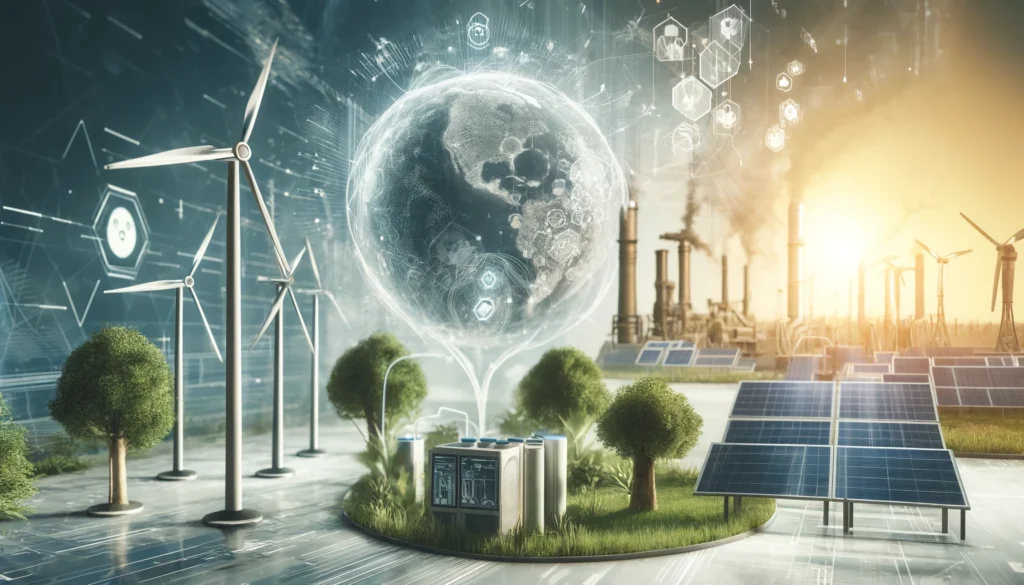Physical Address
304 North Cardinal St.
Dorchester Center, MA 02124
Network
Physical Address
304 North Cardinal St.
Dorchester Center, MA 02124
Network

While world leaders tackle climate change, the need for a transition to renewable energy has become more apparent. Solar, wind, hydro and geothermal power are among the new forms of energy that can be used. Thane Ritchie recognizes this as an investor who looks ahead into the future; he sees how crucial it is that we innovate in our use of renewable power sources if we want them to help prevent global warming from getting worse. “Investing into renewables isn’t just about money,” says Mr.Ritchie.“It’s about guaranteeing sustainable life for people who come after us.”
Reliance on fossil fuels has led to massive pollution worldwide which includes greenhouse gas emissions responsible for climate change. Therefore shifting towards clean electricity generation systems like solar panels or wind mills becomes necessary for reducing carbon footprints and ensuring environment-friendly practices in the long-term.
| Energy Source | CO2 Emissions (gCO2/kWh) | Environmental Impact |
| Coal | 820 | High greenhouse gas emissions, air and water pollution. |
| Natural Gas | 490 | Lower than coal but still significant CO2 emissions. |
| Solar | 20 | Minimal emissions, dependent on manufacturing processes. |
| Wind | 14 | Low emissions, minimal environmental disruption. |
| Hydropower | 24 | Low emissions, potential ecological impacts on water bodies. |
Solar is one of the fastest-growing forms of renewable energy. Innovations such as better designed PV cells have made solar panels much more efficient than before making them affordable and convenient.
For example: New bifacial solar module captures sunlight from both sides thereby increasing power output by 30% compared with traditional ones.
One problem with solar energy has been its intermittency. However, improvements in battery technology like lithium-ion batteries or solid-state batteries could solve this issue by storing excess electricity generated during peak hours for use when there is little sun.
For example: Tesla’s Powerwall allows homeowners store extra electricity produced by their rooftop photovoltaic system so they can still have lights on at night or during blackouts.
Off shore windfarms represent a major breakthrough in harnessing wind power where air currents are stronger and more predictable. This leads to higher output per turbine which results into larger projects being economically viable.
For example: The Hornsea Project One is an offshore windfarm under construction off the coast of Yorkshire, England. Once completed, it will become world’s largest offshore wind farm capable of powering over 1 million homes with its turbines.
Wind farms have always used turbines that contain blades; however, recent developments in blade design have made them bigger and better. Modern ones are also quieter and safer for birds.
For example: Floating windfarms can be anchored deeper into sea where winds blow harder all year round hence producing more electricity at cheaper rates than fixed ones closer to shore.
Although big dams can harm ecosystems around them small-scale hydro power plants do not cause much ecological damage. These systems can supply renewable electricity to remote villages without building large reservoirs which may flood surrounding areas or block fish passage.
For example: Small ‘run-of-river’ hydropower schemes generate clean energy by diverting part of stream flow through turbine without impounding water behind dam walls thereby maintaining natural river ecology downstream too.
Pumped storage hydropower acts like a battery that stores surplus electric power during low demand periods by pumping water uphill then releasing it downhill through generator when there is high demand for electricity.
For example: Dinorwig Power Station in North Wales uses cheap night-time energy to pump water from lower reservoir up into upper one during peak times so that it can produce additional 1728MW (megawatts) within minutes if needed keeping UK national grid balanced between supply and demand at all times.
The traditional geothermal energy depends on naturally occurring heat sources near the surface of the earth. Enhanced Geothermal Systems (EGS) are designed to explore this potential by creating artificial reservoirs of hot water and steam deep underground.
Example: FORGE project in Utah, USA, which seeks to establish commercially viable EGS technology applicable in different places
Geothermal energy is used not only for electricity but also for direct heating applications. Innovations here include geothermal heat pumps that efficiently provide buildings with heating and cooling systems.
Example: Reykjavik district heating system in Iceland that uses geothermal energy to heat homes and buildings significantly reducing reliance on fossil fuels
Thane Ritchie’s investment strategy centers around technologies that have large environmental impacts coupled with financial benefits. His investments are mainly focused on companies involved in developing and deploying renewable energy technologies as a way of fastening transition towards sustainable power systems.
Despite its many successes so far achieved; there are still some barriers facing Renewable Energy Sector such as high initial costs, regulatory requirements and lack of integration between new techs with existing power infrastructure among others however all these problems presents themselves as opportunities for innovation growth since governments cannot singlehandedly solve these challenges thus need private-public partnerships hence governments should work together with private sectors so that they can come up supportive policies plus frameworks necessary for attracting investments into clean energy industries.
The future of energy lies in using renewable sources more efficiently while conserving them. Solar, wind power hydropower systems or even those based off geothermal resources offer cleaner alternatives towards a resilient global electricity mix. Investors such as Thane Ritchie who support these types have key role play in ensuring worldwide sustainability As we continue improving upon our current methods through innovation and other means towards mitigating against climate change effects then indeed healthier planet will be realized not only today but also tomorrow for generations.